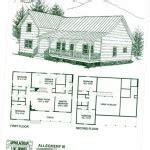Outdoor Cat House Design Plans are detailed blueprints or instructions that provide a step-by-step guide for constructing a protective and comfortable shelter for outdoor cats. These plans typically include precise measurements, detailed diagrams, and material recommendations. For example, a plan might specify the type of wood to use for framing, the dimensions of the panels, and the angle at which to cut the roof.
Having well-designed outdoor cat house plans is crucial for ensuring the well-being of outdoor cats. A well-built cat house offers protection from harsh weather conditions such as rain, snow, and excessive sun exposure. It also provides a safe haven from predators and a sheltered space for cats to rest and sleep.
When designing an outdoor cat house, it is essential to consider certain key aspects to ensure the comfort and well-being of your feline friend. Here are 8 important points to keep in mind:
- Adequate Ventilation
- Proper Insulation
- Raised Floor
- Multiple Exits
- Elevated Placement
- Weather Resistance
- Easy Cleaning
- Appropriate Size
By incorporating these elements into your design, you can create a safe and comfortable outdoor haven for your furry companion.
Adequate Ventilation
Proper ventilation is essential for maintaining a healthy and comfortable environment inside the cat house. Good air circulation helps prevent the build-up of moisture, which can lead to mold growth and respiratory problems for cats. It also allows fresh air to enter the house, which is important for the cat’s overall well-being.
To ensure adequate ventilation, the cat house should have multiple vents or openings. These vents should be placed on opposite sides of the house to create a cross-breeze. The vents should be large enough to allow air to flow freely, but small enough to prevent drafts. It is also important to make sure that the vents are not blocked by insulation or other materials.
In addition to vents, the cat house should also have a raised floor. This will allow air to circulate underneath the house and help prevent moisture build-up. The floor should be made of a material that is easy to clean and disinfect.
By providing adequate ventilation, you can help create a healthy and comfortable environment for your outdoor cat.
Proper Insulation
Proper insulation is essential for maintaining a comfortable temperature inside the cat house, especially during extreme weather conditions. Good insulation will help keep the cat warm in the winter and cool in the summer. It will also help to reduce drafts and moisture build-up.
There are a variety of insulation materials that can be used in cat houses, including fiberglass, foam board, and straw. Fiberglass insulation is a popular choice because it is relatively inexpensive and easy to install. Foam board insulation is also a good option, as it is lightweight and provides excellent insulation. Straw is a natural insulating material that is also inexpensive and easy to use. However, it is important to note that straw can be flammable, so it should be used with caution.
When insulating a cat house, it is important to make sure that all of the gaps and cracks are sealed. This will help to prevent drafts and moisture build-up. It is also important to make sure that the insulation is not too thick, as this can restrict air flow and make the cat house too warm.
By providing proper insulation, you can help create a comfortable and safe environment for your outdoor cat.
Here are some additional tips for insulating a cat house:
- Use a thick layer of insulation, at least 2 inches thick.
- Seal all of the gaps and cracks around the windows and doors.
- Add a layer of weatherstripping around the edges of the door to keep out drafts.
- Cover the windows with plastic wrap or bubble wrap to help insulate them.
- Place a heating pad or a warm blanket inside the cat house for added warmth in the winter.
- Monitor the temperature inside the cat house to make sure that it is comfortable for your cat.
Raised Floor
A raised floor is an important feature of a well-designed outdoor cat house. It provides a number of benefits for cats, including:
- Protection from the elements: A raised floor helps to protect cats from the cold, damp ground. This is especially important in wet or snowy climates. A raised floor also helps to keep cats out of the wind and rain.
- Improved insulation: A raised floor helps to insulate the cat house, keeping it warmer in the winter and cooler in the summer. This is because the air under the floor acts as an insulator.
- Reduced moisture build-up: A raised floor helps to reduce moisture build-up in the cat house. This is because the air under the floor can circulate freely, which helps to prevent condensation from forming.
- Easier cleaning: A raised floor makes it easier to clean the cat house. This is because you can simply sweep or vacuum under the floor, instead of having to move the entire house.
When building a raised floor for a cat house, it is important to use a durable material that is easy to clean and disinfect. You should also make sure that the floor is raised high enough off the ground to prevent moisture from seeping in.
Here are some additional tips for building a raised floor for a cat house:
- Use a material that is at least 2 inches thick.
- Make sure that the floor is raised at least 4 inches off the ground.
- Seal all of the gaps and cracks around the floor to prevent moisture from seeping in.
- Cover the floor with a layer of carpet or other soft material to make it more comfortable for your cat.
By providing your cat with a raised floor, you can help to create a more comfortable and healthy environment for them.
Multiple Exits
Multiple exits are an important feature of a well-designed outdoor cat house. They provide a number of benefits for cats, including:
- Escape routes in case of danger: Multiple exits give cats a way to escape from the house quickly in case of danger, such as a fire or a predator attack.
- Reduced stress: Having multiple exits can help to reduce stress levels in cats. This is because cats feel more secure when they know that they have a way to escape if they need to.
- Improved air circulation: Multiple exits can help to improve air circulation in the cat house. This is because the air can flow more easily through the house when there are multiple openings.
- Easier cleaning: Multiple exits can make it easier to clean the cat house. This is because you can access the house from multiple sides, which makes it easier to reach all of the areas that need to be cleaned.
When designing a cat house with multiple exits, it is important to make sure that the exits are large enough for the cat to fit through easily. You should also make sure that the exits are placed in different locations on the house, so that the cat can escape in any direction if necessary.
Here are some additional tips for designing a cat house with multiple exits:
- Make sure that the exits are at least 6 inches wide and 8 inches high.
- Place the exits on different sides of the house, so that the cat can escape in any direction.
- Avoid placing the exits too close to the ground, as this could make it easier for predators to reach the cat.
- Cover the exits with a flap or other material to help keep out the elements.
By providing your cat with a cat house with multiple exits, you can help to create a more safe, comfortable, and healthy environment for them.
Elevated Placement
Elevated placement is an important consideration for outdoor cat house design plans. Placing the cat house off the ground provides numerous benefits for cats, including:
- Protection from predators: Elevated placement helps to protect cats from predators, such as coyotes, foxes, and dogs. Cats are natural climbers, and they feel more secure when they are up high. An elevated cat house gives cats a place to escape from predators and survey their surroundings.
- Reduced exposure to the elements: Elevated placement helps to reduce cats’ exposure to the elements, such as rain, snow, and wind. This is especially important in harsh climates, where cats can easily get cold and wet if they are exposed to the elements for long periods of time. An elevated cat house provides cats with a sheltered place to stay warm and dry.
- Improved air circulation: Elevated placement helps to improve air circulation in the cat house. This is important for cats’ health, as it helps to prevent the build-up of moisture and mold. An elevated cat house allows air to circulate freely around the house, which helps to keep the house clean and fresh.
- Easier access for cats: Elevated placement makes it easier for cats to access the cat house. This is especially important for older cats or cats with mobility issues. An elevated cat house provides cats with a safe and easy way to get in and out of the house.
When choosing a location for an elevated cat house, it is important to consider the following factors:
- Height: The cat house should be placed at a height that is high enough to protect cats from predators but low enough that they can easily access the house. A good rule of thumb is to place the house at least 4 feet off the ground.
- Location: The cat house should be placed in a location that is protected from the elements and provides cats with a good view of their surroundings. A good location for a cat house is on a deck, porch, or in a tree.
- Stability: The cat house should be placed on a stable surface to prevent it from tipping over. If the cat house is placed on a deck or porch, make sure that the surface is level and secure.
By following these tips, you can choose the perfect elevated location for your cat’s outdoor house.
Once you have chosen a location for the cat house, you can begin to build it. There are many different ways to build an elevated cat house, so you can choose the design that best suits your needs and the needs of your cat.
Weather Resistance
Weather resistance is an important consideration for outdoor cat house design plans. Cats are sensitive to the elements, and they can easily get cold, wet, and sick if they are not protected from the weather. A well-designed cat house will provide cats with a safe and comfortable place to stay warm and dry, even in harsh weather conditions.
There are a number of factors to consider when designing a weather-resistant cat house. These factors include:
- Materials: The materials used to build the cat house should be weather-resistant. This means that they should be able to withstand rain, snow, wind, and sun without rotting, warping, or deteriorating. Good choices for weather-resistant materials include treated wood, vinyl, and metal.
- Construction: The cat house should be constructed in a way that prevents water and drafts from entering the house. This means that the seams and joints should be sealed, and the roof should be sloped to allow water to run off. It is also important to make sure that the cat house is well-insulated to help keep cats warm in the winter.
- Ventilation: The cat house should have adequate ventilation to prevent moisture from building up inside the house. This can be achieved by installing vents in the walls or roof of the house. It is important to make sure that the vents are placed in a way that prevents drafts from entering the house.
- Placement: The cat house should be placed in a location that is protected from the elements. This means that it should be placed in a sheltered area, such as on a porch or under a tree. It is also important to make sure that the cat house is not placed in a low-lying area where it could be flooded.
By following these tips, you can design a weather-resistant cat house that will provide your cat with a safe and comfortable place to stay warm and dry, even in harsh weather conditions.
Here are some additional tips for designing a weather-resistant cat house:
- Use a sealant to seal all of the seams and joints in the cat house.
- Install a weatherstripping around the door of the cat house to prevent drafts from entering.
- Place the cat house in a sheltered area, such as on a porch or under a tree.
- Elevate the cat house off the ground to prevent it from flooding.
- Insulate the cat house with foam board or other insulating material to help keep cats warm in the winter.
By following these tips, you can create a weather-resistant cat house that will provide your cat with years of comfort and protection.
Easy Cleaning
Easy cleaning is an important consideration for outdoor cat house design plans. A cat house that is easy to clean will help to keep your cat healthy and comfortable. There are a number of factors to consider when designing an easy-to-clean cat house, including:
- Smooth surfaces: The surfaces of the cat house should be smooth and easy to wipe clean. This will help to prevent dirt and debris from building up on the house. Avoid using materials that are rough or porous, as these materials can be difficult to clean.
- Removable parts: The cat house should have removable parts, such as a removable roof or floor. This will make it easier to clean the house thoroughly. Make sure that the removable parts are easy to remove and replace.
- Non-toxic materials: The materials used to build the cat house should be non-toxic. This is important for the health of your cat, as they may come into contact with the materials when they are inside the house. Avoid using materials that contain harmful chemicals or toxins.
- Adequate ventilation: The cat house should have adequate ventilation to prevent moisture from building up inside the house. This will help to prevent the growth of mold and mildew, which can be harmful to your cat’s health. Make sure that the vents are placed in a way that prevents drafts from entering the house.
By following these tips, you can design an easy-to-clean cat house that will help to keep your cat healthy and comfortable.
Appropriate Size
The appropriate size of an outdoor cat house will depend on a number of factors, including the number of cats that will be using the house, the size of the cats, and the climate in which the house will be used.
- Number of cats: A single cat will need a house that is at least 2 feet wide, 2 feet deep, and 2 feet high. For two cats, the house should be at least 3 feet wide, 3 feet deep, and 3 feet high. For three or more cats, the house should be at least 4 feet wide, 4 feet deep, and 4 feet high.
- Size of cats: Larger cats will need a larger house than smaller cats. For example, a Maine Coon cat will need a house that is at least 3 feet wide, 3 feet deep, and 3 feet high. A smaller cat, such as a Siamese cat, will need a house that is at least 2 feet wide, 2 feet deep, and 2 feet high.
- Climate: In cold climates, cats will need a house that is well-insulated to help them stay warm. The house should also be large enough for the cats to move around and stay active.
- Ventilation: The cat house should have adequate ventilation to prevent moisture from building up inside the house. This is especially important in humid climates.
By following these tips, you can choose the right size cat house for your needs. A well-sized cat house will provide your cat with a comfortable and safe place to sleep, relax, and play.










Related Posts








